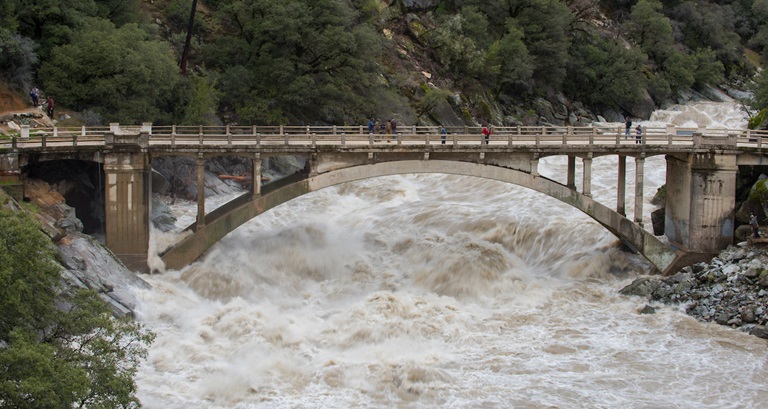How to Build the Ultimate Emergency Preparedness Kit
Old Route 49 bridge crossing over the South Yuba River in Nevada City, Calif. saw local and regional visitors during the atmospheric river event across Northern California on January 9, 2017. 
September is National Preparedness Month. This month serves as a reminder for all Californians to ensure they have a plan in place in the event of an emergency or natural disaster, such as a large flood or wildfire.
As we have seen most recently with the devastating wildfires across the State, it is crucial that Californians are prepared. Having an emergency preparedness kit on hand and ready to go will ensure that you and your family will be ready whenever disaster strikes.
Emergency preparedness kits should include essential items that will help sustain you, your family, and your pets for several days. Always make sure your preparedness kit is customized to meet the unique needs of your family and remember to periodically check supplies and refresh water, food, batteries, and first aid items when needed.
Below is a list of items to get you started:
- Water (one gallon per person per day for at least three days, for drinking and sanitation)
- Food (at least a three-day supply of non-perishable food)
- Battery-powered or hand crank radio and a NOAA Weather Radio with tone alert
- Flashlight
- First aid kit
- Extra batteries
- Whistle (to signal for help)
- Dust mask (to help filter contaminated air)
- Plastic sheeting and duct tape (to shelter in place)
- Moist towelettes, garbage bags, and plastic ties (for personal sanitation)
- Wrench or pliers (to turn off utilities)
- Manual can opener (for food)
- Local maps
- Cell phone with chargers and a backup battery
The Centers for Disease Control also started recommending in 2020 that families have additional items in their emergency preparedness kit to prevent the spread of Coronavirus and other infectious diseases.
The following items are now recommended:
- Cloth face coverings (for everyone ages 2 and above)
- Soap
- Hand sanitizer
- Disinfecting wipes to disinfect surfaces
Additional items for consideration, include:
- Prescription medications
- Non-prescription medications such as pain relievers, anti-diarrhea medication, antacids, or laxatives
- Prescription eyeglasses and contact lens solution
- Infant formula, bottles, diapers, wipes, and diaper rash cream
- Pet food and extra water for your pet
- Cash or traveler's checks
- Important family documents such as copies of insurance policies, identification and bank account records saved electronically or in a waterproof, portable container
- Sleeping bag or warm blanket for each person
- Complete change of clothing appropriate for your climate and sturdy shoes
- Fire extinguisher
- Matches in a waterproof container
- Feminine supplies and personal hygiene items
- Mess kits, paper cups, plates, paper towels and plastic utensils
- Paper and pencil
- Books, games, puzzles or other activities for children
For more information on how and where to store your emergency preparedness kit, check out Ready.gov.
And for more information on National Preparedness Month be sure to visit the California Governor’s Office of Emergency Services website.
